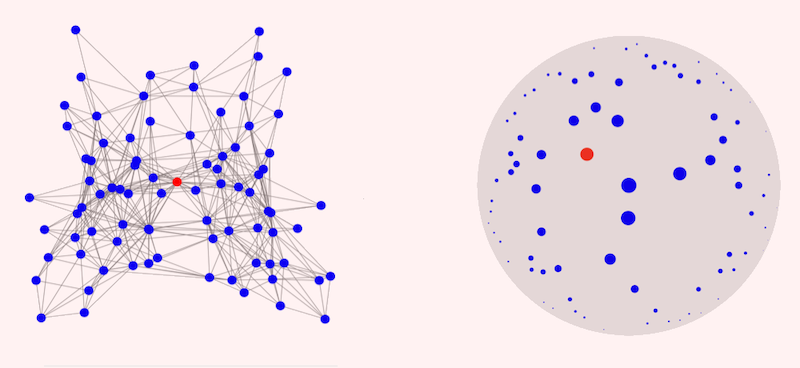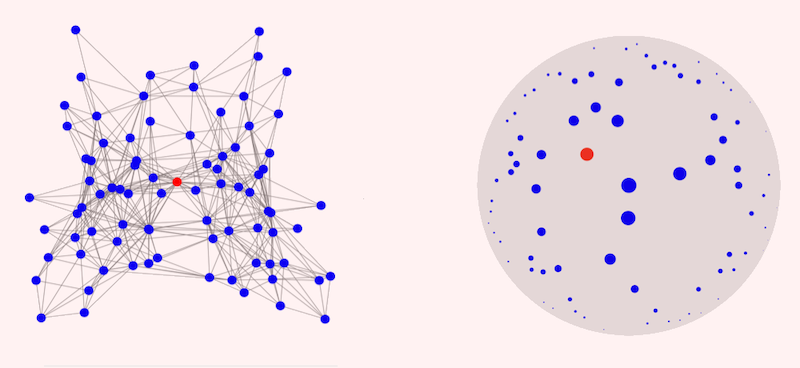A Potential Tool for Diagnosing Alzheimer’s Disease
Each year, over 10 million people worldwide will receive a dementia diagnosis. Now researchers in Paris have developed a tool that could allow for detection of such brain disorders before symptoms set in [1]. The method could also be used to diagnose other brain disorders, such as Parkinson’s disease or a stroke. The tool has a “whole range of potential clinical applications,” says Alice Longhena, who works at Sorbonne University, France, and led the study.
Alzheimer’s is a degenerative brain disease that causes memory loss, cognition impairment, and personality changes, among other symptoms. Eventually, it leads to death. The morbidity primarily comes from connectivity loss among the white matter the connects the cortical areas of the brain—the gray matter—leading to disrupted neuron–neuron connectivity and brain atrophy.
Alzheimer’s is typically diagnosed with the onset of memory-loss symptoms, which, Longhena says, can be 5–10 years after the onset of the disease itself. She and her colleagues wondered if there may be a way to diagnose the disease earlier, an ability that could help in starting treatment sooner and slowing the progression of the disease.
To that end, Longhena and her colleagues turned to network theory to see if they could spot pattern changes in diseased brains. Specifically, the team took images of healthy and diseased brains and transformed them into networks of nodes and links using structural magnetic resonance imaging, which maps brain anatomy, and functional magnetic resonance imaging, which maps brain activity via changes in blood flow. These networks were then represented in hyperbolic space—that is, where parallel lines meet and the angles of a triangle add up to less than 180°. In this format there are no links between nodes—instead, the interaction between two nodes is encoded in their distance from one another.
This transformation sounds “exotic,” Longhena says. But from a modeling perspective, it allows researchers to simplify their analysis of the topology of the network. “When you do the embedding, you encode multiple pieces of topological information in the coordinates of the nodes,” she says. This compression makes hyperbolic networks potentially more powerful than standard ones because fewer calculations are needed to extract the desired information. Computations are also faster. It is easier and quicker to compute a distance between two nodes than to find the shortest path.
By analyzing hyperbolic graphs derived from healthy and diseased brains, the team found that they could distinguish the two from the geometry of the nodes. In the brains of Alzheimer’s patients, the medial temporal areas of the brain—the memory-related hippocampus and amygdala—had disruption to both structural and functional connectivity. This disruption was not measurable in the original networks using traditional topological parameters. “Since the patients have been diagnosed with Alzheimer’s we would expect to detect these changes,” Longhena says. Nevertheless, it validates our method and shows why other measures fail, she adds.
The team also found disruption in the frontal, behavior-related areas of the brain in hyperbolic networks derived from the structural magnetic resonance imaging. No disruption was seen in the networks derived from the functional magnetic resonance images for these areas of the brain, leading Longhena and her colleagues to conclude they could see some damage at the network level before the clinical symptoms set in.
The initial study involved the brains of patients already diagnosed with Alzheimer’s. Longhena says the tool also has diagnostic potential, which further studies and clinical trials would need to confirm. Willem de Haan, a neurologist who studies the relation between brain networks and cognitive impairment at Amsterdam University Medical Center, also sees the promise of the technique. “This approach [could] lead to a new marker that is sensitive to early or specific changes during the Alzheimer’s disease course (diagnostic value), or that has prognostic value, or is good for detecting intervention effects,” he says.
De Haan notes that the method developed by the researchers is sensitive to connectivity disruption from causes other than neurodegeneration. Thanks to that versatility, the tool could be used to study other brain disorders. “By combining different graph-theoretical properties into a low-dimensional spatial embedding, they are looking at a higher-order level of network organization. This makes it quite abstract, but it supports the idea that more information about the brain’s organization can be found with these more advanced types of analysis,” De Haan says.
Longhena says the method could be used to evaluate damage to the brain from a stroke, for example, and then to study how the brain recreates connections as the person recovers. There is also the potential to use the technique to diagnose neurodegenerative diseases before symptoms set in. Longhena notes that this could be prohibitively expensive, however, because of the cost of functional magnetic resonance imaging. But for those at high risk, the benefits could outweigh the expense.
–Katherine Wright
Katherine Wright is the Deputy Editor of Physics Magazine.
References
- A. Longhena et al., “Hyperbolic embedding of brain networks detects regions disrupted by neurodegeneration in Alzheimer’s disease,” Phys. Rev. E 111, 044402 (2025).





